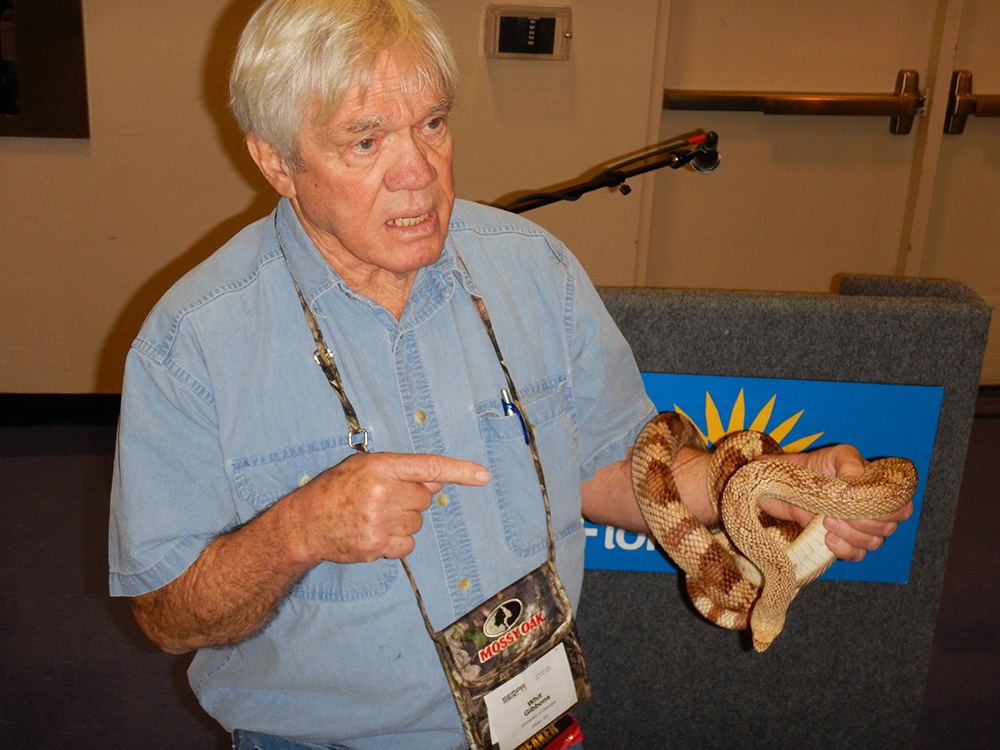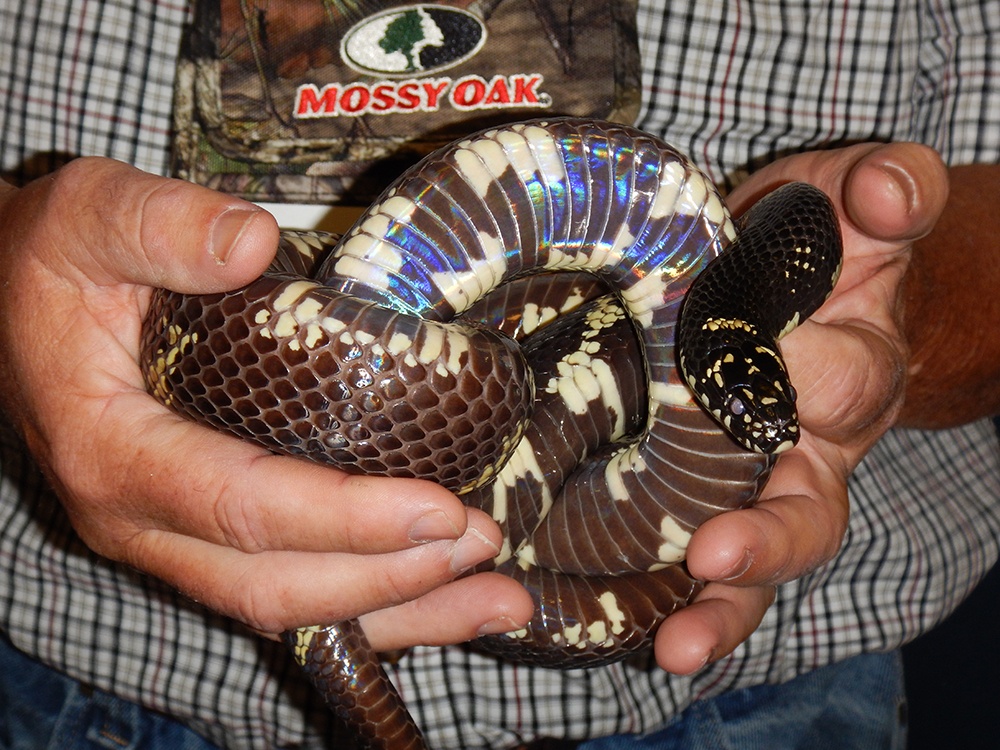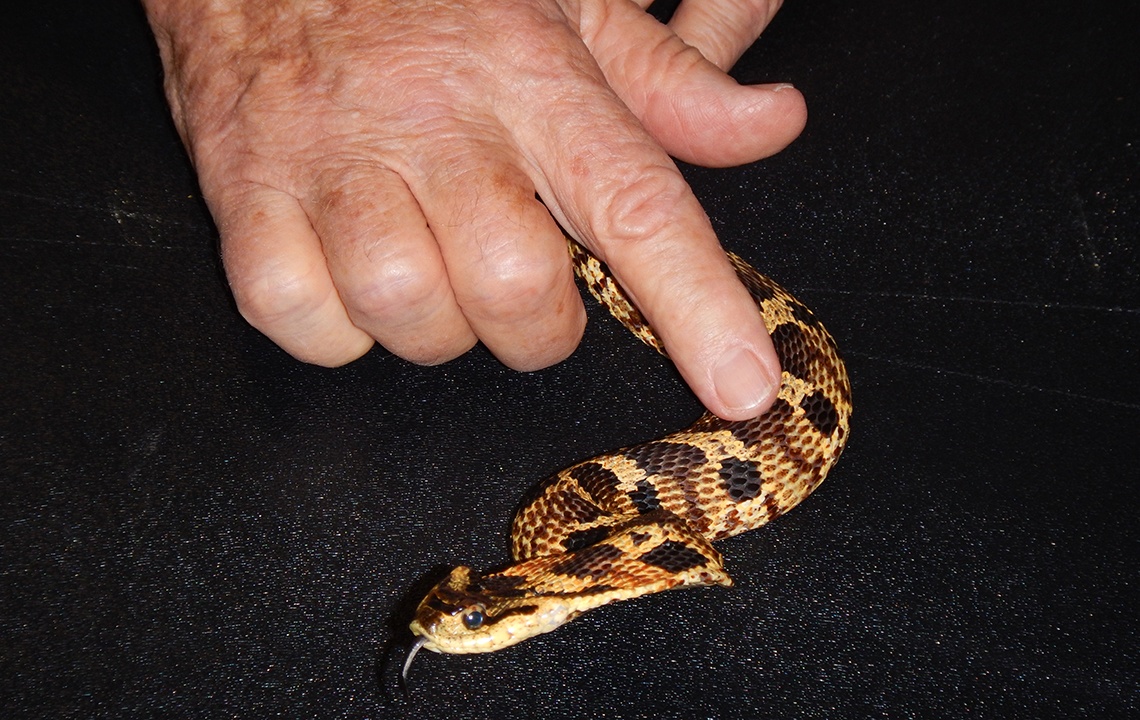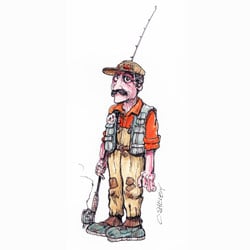Snake Doctor Whit Gibbons explains why he likes snakes, and why he says others should, too, in this overview of venomous snakes in the Southeast.
Perhaps snake doctor is a fair title for someone who made snakes their career and is now Professor Emeritus of Ecology at the University of Georgia. During his university career, Whit Gibbons found time to write or edit twenty books on herpetology and ecology. Maybe what truly sets Whit apart is that he likes snakes.
 And he wishes more people did. That wish is what had him speaking to the Southeastern Outdoor Press Association in Lakeland, Florida, in hope that his enthusiasm might be contagious.
And he wishes more people did. That wish is what had him speaking to the Southeastern Outdoor Press Association in Lakeland, Florida, in hope that his enthusiasm might be contagious.
“Of the 53 native snake species in the Southeast,” says Whit, “only six are venomous.” There are also four or more exotic species that have established populations, most notably the Burmese python in the Everglades.

How Whit describes venemous snakes
The dangers of venomous snakes seem exaggerated once you hear Whit describe them.
Copperheads
Copperheads are common snakes whose venom is weak and deaths by copperhead bites are rare. More often than not, these snakes remain hidden while you walk past. Biting is their last defense.
Eastern Diamondback
The eastern diamondback rattlesnake, explains Whit, is ten times more venomous than a copperhead. But he adds, “Two thirds of their bites are dry, delivering little or no venom.”
Rattlesnakes
Timber and canebrake rattlesnakes are the same species, with the canebrake having a lighter color. Much like the eastern diamondback, these snakes deserve to be viewed at a respectful distance. Pigmy rattlesnakes are the smallest venomous southeastern snake and it uses its tail to attract food such as frogs. Their rattles are so small they are often difficult to hear.
Eastern Coral Snake
The eastern coral snake, which delivers a neurotoxic venom, rarely bites anyone unless they pick the snake up.
Cottonmouths
Cottonmouths are often described with almost mythical powers, falling from trees into boats and chasing people through the marsh. But Whit says their threats are overrated. Still, like most venomous snakes, they are best observed at a distance.

Cowards, bluffers and warriors
To sum up his views on venomous snakes, Whit quotes Clifford Pope, a herpetologist. “Snakes are first cowards, then bluffers, and last of all warriors.”
All the while Whit shares his snake wisdom, he walks around with an assortment of snakes that keeps his audience’s eyes on him. And he peppers his talk with interesting anecdotes and tidbits.
For instance, “If you have flying squirrels in your attic just turn loose a rat snake. After he eats them, he’ll leave.”
His snake safety guide is simple enough. “If you don’t recognize the snake, don’t try to handle it.”
Exotic species give most biologists fits and the Burmese python may be another example of one that should not have gotten loose in the first place. When asked how far they might spread, Whit replied, “If the thermocline in Asia is a guide, they could go to Washington, D.C., and around the coast to California.”
Whit’s love of the outdoors got him interested in biology and as he added graduate degrees he specialized as he went along, ending with a doctorate degree. So calling Whit a snake doctor isn’t too far afield.
If you want to become more familiar with the snakes in your area, Whit’s book with Mike Dorcas, Snakes of the Southeast, is a good place to start. It’s available through his website at www.whitgibbons.com

























